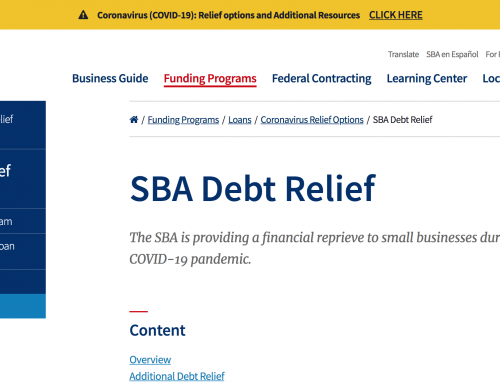Podcast: Play in new window | Download
Subscribe: Apple Podcasts | RSS
Cash Flow Ratios
Audio
Cash Flow Ratios
Topics
Summary
Operating Cash Flow / Sales Ratio
Free Cash-Flow / Operating Cash Ratio
Cashflow Coverage Ratio
Summary
Cash flow is the actual amount of cash generated or lost by an entity during the course of operations. Cash and cash flow are important mainly because it is perhaps the ultimate indicator of a company’s attractiveness, success or health. As they say, “Cash is King.”
The main reason for pursuing any business activity is ultimately to make money. Successful well-performing businesses have enough cash to comfortably make timely payments to creditors and lenders, meet operating expenses and pursue growth and expansion initiatives. Companies that are short on cash are in just the opposite position and can over time be at risk of insolvency.
Cash is a factor in evaluating solvency, liquidity, growth potential, efficiency and the quality of management overall. Understanding cash flow is so significant that financial statements usually include the statement of cash flows which is devoted entirely to this one factor. The statement is divided into three parts: operating, financing and investing.
Operating Cash Flow / Sales Ratio
The operating cash flow / sales ratio is limited by its very nature. This ratio just gives a very broad or general idea about how well a company can convert sales into cash. Without a real standard benchmark to rely upon to evaluate the result, using trend analysis and peer analysis is important.
When evaluating this ratio over multiple time periods, an analyst should expect to see a reasonably consistent relationship between cash flow and sales. When sales increase, so should cash flow. If this consistency is not present, further analysis should be pursued. Some factors to look for in such a situation might include changes in sale terms, potential credit issues with buyers or issues with managing trade receivables.
Free Cash-Flow / Operating Cash Ratio
Free cash-flow / operating cash flow is a significant ratio for users interested in understanding cash that may be available for additional activities. When evaluating this measure, the higher resulting ratio is better. Most credit analysts and many investment analysts consider free cash flow the most important factor to consider when making recommendations.
Good results give comfort to creditors and investors alike. High levels of free cash flow are evidence of a well performing operation and enable financial flexibility in decision making, strategic planning and the overall company management process. Peer analysis is helpful in identifying comparable standards and evaluations.
Cashflow Coverage Ratio
In its base application, the cash flow coverage ratio estimates a company’s ability to meet its interest expense with available free cash flow. The ratio is included in the cash flow group but is also a measure of liquidity or solvency. A higher result is almost always better and a comfortable minimum standard should be at least 1.5x given that other payments, not simply interest expense, can be present.
Many users place high value on this ratio, in particular lenders. It is an important indication of financial condition and company quality. Correctly evaluating the quality of cash flow coverage is critical for many reasons. Some other coverage examples include loan principal repayment, preferred stock coverage, capital expenditure coverage, dividend coverage, and other similar uses. Analysts that understand their target company, its industry and the purpose behind the analysis being conducted will find ways to best apply the concept of coverage in the course of their work.
Valuation Ratios
Audio
Valuation Ratios
Topics
Summary
Price/Book Value Ratio
Earnings per Share
Price to Earnings per Share
Price/Earnings to Growth Ratio
Price / Sales Ratio
Dividend Yield Ratio
Dividend Payout Ratio
Enterprise Market Value
Summary
Valuation ratios in this sense are concerned with identifying the value component of securities investment vehicles behind companies. These are most often used by people who participate in the securities markets (stock market and equity sales). From this perspective, a range of users would include those employed in the industry such as portfolio managers or investment analysts, down to smaller participants like individual investors. In general, these users are looking to make either investment decisions or recommendations. Valuation is an important concept mostly because its serves as a foundational component for determining the actual cost or price of an investment. It provides a way to measure the relative value of an investment against alternative options.
Price/Book Value Ratio
Price/book value ratio (price to book or P/B ratio) compares current market value to current book value. Market value is the current value of the company in the stock market, while book value is the difference between reported assets and reported liabilities for a given period. This is most often expressed in terms of per share values. The P/B ratio is an indication of the inherent value of a company. Note that some formula calculations will exclude intangible assets when calculating book value, which is referred to as the price to tangible book ratio.
Price to book is a very simplistic method of identifying attractive investment opportunities. A lower P/B ratio can mean either the stock is undervalued or something is fundamentally wrong with the company. In other words, the ratio by itself does not explain the “why” behind the result. This ratio gives you an idea if you're paying too much for what would be left if the company declared bankruptcy.
P/B ratio is particularly useful for value investors, who are always on the hunt for low price stocks that the market has neglected. A P/B result of less than 1.0x generally means either the market believes the asset value is overstated, or the company is underperforming from an earnings perspective.
The ratio has several different limitations. It is mostly relevant for capital-intensive companies, financial institutions or other asset heavy companies. Book value does not account meaningfully for considerations such as goodwill, brand identity, new potential innovations, intellectual properties and any potential capital appreciation of certain assets. High leverage can also artificially distort the ratio because of the level of liabilities. Additionally, a newer company with historical reported losses and negative equity will have negative book value, but could be poised for profitability going forward.
Earnings per Share
Earnings per share (EPS), is the most commonly expressed, and most important, measure of company valuation. EPS is generally regarded as the single most significant factor for influencing a company’s stock price, either upward or downward. A higher ratio result is always better. From an investment perspective, this ratio is highly significant and less important from a lender perspective.
EPS is also often calculated on a fully diluted basis, which accounts for the potential of additional shares from sources such as options, warrants and convertible securities. This calculation is generally considered the more accurate method. This metric is best evaluated in comparison to other companies in the same industry as well as over time using trend analysis.
Price to Earnings per Share
Also known as the P/E Ratio, this metric is extremely popular among investors. The calculation shows the relation between the market price of a stock and the underlying earnings on a per share basis. The measure shows how expensive a stock is in relative terms to the market price. The ratio effectively shows how much investors are willing to pay per dollar of company earnings. It is useful for comparing investment opportunities between companies within an industry segment, and even between different industries. The P/E Ratio is traditionally calculated using the previous 12 month historical earnings and can also be calculated using 12 month projected earnings. If using forward earnings, the ratio is then known as forward P/E.
If there is a drawback to this ratio it would be that the denominator is based (usually) on historical reported earnings, which can be manipulated or skewed either by proper accounting convention or even fraudulent reporting. Thus, it is important for the user to understand the quality of the earnings reported.
Price/Earnings to Growth Ratio
Price/earnings to growth ratio (PEG) takes into account company earnings growth in evaluating potential investment opportunities. Because the metric adds a growth component, it is considered more complete than the standard price/earnings ratio. Investors may look to see if a stock is under or overvalued and make decisions accordingly.
Price/Sales Ratio
The price to sales ratio (P/S) relates the company price per share to sales. The benefit to the approach is that it provides a method for evaluating potential investment opportunities among companies that are operational but not yet profitable. Such a company could be newer and still operating at a loss. The drawback is the highly limited nature of the calculation, in particular the exclusion of earnings quality or cash flow generation. It is useful for comparing similar stage companies within the same industry sector.
Dividend Yield Ratio
The dividend yield ratio calculates the ratio between dividends received relative to a company’s stock price. The objective is to illustrate what relative percentage an investor can expect to receive from dividends, compared to the stock’s purchase price. This metric is important to equity investors that prefer income producing stocks (as opposed to growth-oriented equity investors).
Dividend Payout Ratio
The dividend payout ratio simply shows the relationship between dividends paid and net income for a given reporting period. The ratio can be evaluated relative to historical dividend payout rates, management’s stated goals regarding dividends, peer results, and dividend related decisions.
A positive result indicates earnings are sufficient to cover dividends paid. That is the expected scenario if a company is paying dividends. A negative result means that current earnings are not sufficient to support the current level of dividend payout. This is not ideal and indicates adjustments in dividend policy or operations (or both) are necessary.
Trend analysis is helpful in determining the consistency of the ratio over time, which can be compared to actual payouts as well as management’s philosophy regarding dividends. This metric is relevant to dividend paying companies. New companies are less likely to pay dividends, generally choosing instead to reinvest earnings back into the company to support future growth.
Enterprise Market Value
Enterprise market value is a simple method for making quick valuation assessments of a company, viewing it as an entire economic entity or enterprise and doing so from an acquisition perspective. Other standard metrics may include market capitalization which is simply the aggregate value of its common stock shares outstanding. Generally speaking, many adjustments are made during an acquisition process but this ratio simplifies the issue using a “quick and dirty” methodology, only adjusting for outstanding debt and cash. In an acquisition, acquiring debt would increase the cost of acquisition but cash holdings would reduce the cost of acquisition. This ratio accounts for these two factors. The ratio can only be considered as a quick estimate of acquisition cost at best and the user should never expect to rely solely on this approach when seriously pursuing acquisition targets. This is only one metric in the analysis, due diligence, and negotiation required of a business sale.
Financial Ratios in Closing
Audio
Financial Ratios in Closing
Topics
Summary
Summary
Financial ratios are only indications and not conclusions. They provide a tool for further financial analysis and must be taken in context. Context can be framed as the five Ws: Who, what, when, where, and why. Who is producing the data you are using and is it legitimate? What kind of business are you analyzing and comparing with? When or what time period are you using? Where is the business? And why are you doing this? Context is everything when drawing valid conclusions and making comparisons.
Ratios will help support conclusions and decision making. They provide standardized metrics for comparison across several different areas covered: Liquidity, profitability, solvency, operations, cash flow, valuation, and more. They provide business insights, lead to further investigation beyond ratios, and create useful benchmarks.
If you have found Financial Ratio Flashcards useful, please tell a friend or consider getting the resource in Kindle Format. Please email me with any questions or concerns personally at John at AccountingPlay.com. Thanks.






Leave A Comment